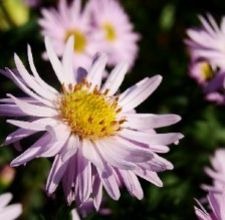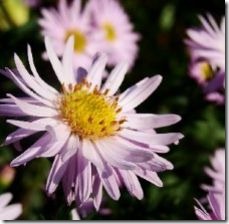Plants and flowers provide color and beauty to your garden landscape and in home décor. Flower blossoms generally last through the spring and summer months, whereas colored foliage can bring life to your garden up until the first frost. A mixture of violet-pink plants and flowers is a lovely way to add depth and color to your landscape.
Heuchera ‘Frosted Violet’
-
The Heuchera ‘Frosted Violet,’ commonly known as coral bells, is a perennial plant, which means it dies back at the end of the growing season and returns in the spring. Its rounded leaves are violet pink in the spring months and become a dark violet during the summer and fall months. Small white or pink flowers bloom in the months of June and July. The plant reaches a height of 1 to 2 ½ feet with a spread of up to 1 ½ feet. This plant grows well in moist, well-draining soil, full sun with some shade and moderate watering in the United States Department of Agriculture growth hardiness zones 4 to 9. See Resource 1 for the USDA hardiness zone map.
Persian Shield
-
Persian shield, or Strobilanthes dyerianus, is a sub-tropical plant that is a member of the acanthus family. Its defining characteristic is its 6-inch-long gleaming violet-pink leaves. This shrub can grow to a height of 3 feet tall and a width of up to 4 feet. Moist soil and high humidity are necessary to grow this plant; the end of spring when the soil is beginning to warm up is the best time to plant the Persian shield. This is a great filler plant in your flower garden and grows well in containers. The growth hardiness zones for this plant are the USDA zones 9 to 10.
Western Silver Aster
-
The Western silver aster, or Symphyotrichum sericeum, is a perennial herb plant with small spiky green leaves that blooms violet-pink or blue-pink flowers with yellow centers during the months of September and October. This fragile plant requires dry soil and partial sunlight to full sun. This flower is easy to maintain; as it matures and becomes established it self-seeds. According to the University of Texas at Austin Wildflower Center, this plant grows well in USDA zones 3 to 9. One delightful benefit to planting this in your landscape is the attraction it holds for butterflies.
Common Milkweed
-
The Common milkweed, or Asclepias syriaca, is an herbaceous perennial plant native to the eastern region of North America. This plant prefers dry soil, full sunlight and moderate watering to thrive. It is a good border plant as it spreads rapidly through its roots or through self-seeding from its seed pods. The plant reaches a height of up to 3 feet, has thin light green leaves with a reddish tinge and produces clusters of violet-pink flowers in the late spring and into the summer months. Monarch butterflies prefer the leaves of this plant for food. The USDA hardiness zones for the hardy common milkweed are zones 3 to 9.


Deprecated: strpos(): Passing null to parameter #1 ($haystack) of type string is deprecated in /home/agriviek8Qv/agriviet.net/public_html/wp-includes/comment-template.php on line 2522